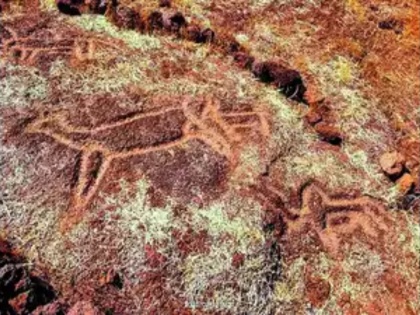Ratnagiri: Ancient Rock Carvings Dating Back 10,000 Years Found In Two Villages
By Lokmat English Desk | Published: March 9, 2024 09:46 AM2024-03-09T09:46:06+5:302024-03-09T09:55:19+5:30
In Ratnagiri district, Mumbai, eight geoglyphs, potentially dating back around 10,000 years, have been discovered, as reported by an ...

Ratnagiri: Ancient Rock Carvings Dating Back 10,000 Years Found In Two Villages
In Ratnagiri district, Mumbai, eight geoglyphs, potentially dating back around 10,000 years, have been discovered, as reported by an anthropologist. Seven of these rock art carvings, with one measuring about 17 feet in length, were found in Umbarle village in Dapoli taluka, while the eighth was discovered in Borkhat village in Mandangad taluka.
What is Geoglyphs?
Geoglyphs are a type of prehistoric rock art, and clusters of them are distributed along the Konkan coast in Maharashtra and Goa, covering a distance of 900 km. Ratnagiri district alone boasts over 1,500 pieces of such art across 70 sites, with seven of them listed on UNESCO's tentative world heritage list. Local resident Shailesh Pangat mentioned that villagers had long observed these geoglyphs during activities like cattle grazing but were unaware of their historical and anthropological significance. The discovery was made when anthropologists engaged in conversations with villagers about rock art forms.
Dr. Anjay Dhanawade, a historian and anthropologist, described one of the findings in Dapoli, stating it depicts a 17-foot-tall human figure wearing headgear, accompanied by a group of animals walking towards the man's right side. The carving includes a bull at the top, a deer with a calf in the middle, and another bull at the bottom, along with a pair of deer with a calf on the man's left. The Mandangad carving, though partly damaged, shows an unidentified animal.
What UNESCO Says?
UNESCO notes that geoglyphs not only serve as evidence of early human settlements but also provide insights into how people adapted to wetlands in dry arid plateaus. They shed light on extinct fauna and contribute to ongoing research on human resilience.
Open in app